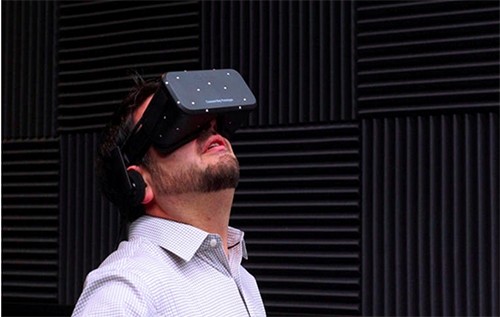Virtual reality is really coming. Consider only healthcare, its potential applications are enormous. For many years, scientists and medical experts have been developing and researching virtual reality to take advantage of virtual reality methods to help them diagnose, treat, and train medical staff. Many virtual reality technologies are now being used in clinical practice. Of course, with the continuous development of virtual reality technology, these methods are constantly developing and improving. Here are ten examples that have been applied to practice. Exposure therapy Exposure therapy is one of the ways to treat phobia. Psychiatrists at the University of Louisville have used virtual reality to help patients overcome fear and treat claustrophobic patients. In this case, virtual reality technology is used to create a controlled simulation environment for patients, so that patients can break away from escapism, face their fears, and even practice coping strategies. All of this is due to the use of virtual reality technology - the world of simulation is privately set, secure, and can be easily stopped or repeated artificially. Treatment of post-traumatic stress disorder Similar to exposure therapy, which can be used to treat phobias and anxiety disorders, virtual reality can also be used to treat post-traumatic stress disorder (PTSD) in soldiers. The University of Southern California's Institute of Innovative Technology mentioned in a paper that virtual reality has been used to treat post-traumatic stress disorder as early as 1997 when Georgia Tech released the so-called Virtual Vietnam VR. Recently, clinics and hospitals are using virtual reality technology to simulate wars, such as the Iraq war, the war in Afghanistan, etc., helping veterans to repeatedly experience the traumatic events they have experienced. In a secure, controlled virtual environment, they can learn how to deal with crises, avoid dangerous situations, and protect themselves and Others. Analgesic treatment For burn patients, pain is a problem that has to be faced. Doctors hope to distract patients' attention through virtual reality and use distraction therapy to help them deal with pain. The University of Washington has launched a virtual reality video game called SnowWorld, in which patients can throw snowballs at penguins and listen to Paul Simon's music, reducing pain during the treatment process by suppressing pain and blocking pain pathways in the brain. Pain, such as wound care, physical therapy, etc. A 2011 study by the military showed that SnowWorld's analgesic effect is better than morphine for soldiers who burn by explosion. Surgical training Surgeons usually have to deal with corpses when they are trained. They must go through a process of continuous accumulation of experience and gradual training before taking over a surgical task or taking on a bigger role in surgery. Virtual reality technology allows virtual surgeons to immersively simulate the surgical procedure through a virtual surgical field without any risk to the real patient. Stanford University's surgical simulators even provide tactile feedback to surgical trainers. The Stanford University Endoscopic Sinus Surgery Simulator creates a three-dimensional model of the patient's CT scan for the trainer to simulate surgery. This example was put into use in 2002. Although this technology does not use a head-mounted display, this basic work has a certain effect on the effectiveness of future virtual simulations. Phantom limb pain Phantom limb pain is a common medical problem for patients who have lost their limbs. For example, some people without arms will feel that they are clenching their fists and cannot relax. Of course, this is still light, and many phantom limb pains are more unbearable than this. In the past, mirror therapy was often used to solve the problem of phantom limb pain. That is, let the patient see a mirror image of their healthy limbs, so that the brain may be synchronized with real limb movements and phantom limb movements, thereby alleviating phantom limb pain. Similarly, last year's medical journal Frontiers in Neuroscience published a study investigating the possible role of virtual reality games in relieving phantom limb pain. The report states that the sensor is capable of receiving nerve signals from the brain. In the game, patients use virtual limbs to complete the prescribed tasks, which can help them gain some control and learning ability. For example, they can learn how to relax their fists that are painfully gripped. Antimicrobial Central Venous Catheter Central Venous Catheter,CVC,central venous catheter set,central venous catheter double lumen,central venous catheter kit Anesthesia Medical Co., Ltd. , https://www.honestymed.com
Top 10 Practices of Virtual Reality Technology in the Medical Field
Next Article
Commercial Pig Breeding Management Technology
Prev Article
How to prevent insect pests in winter